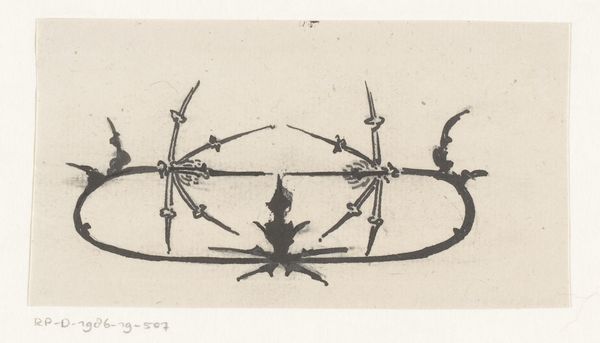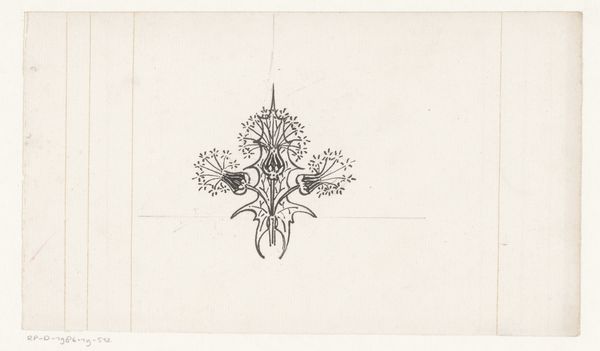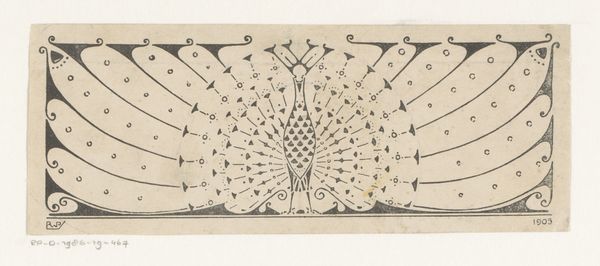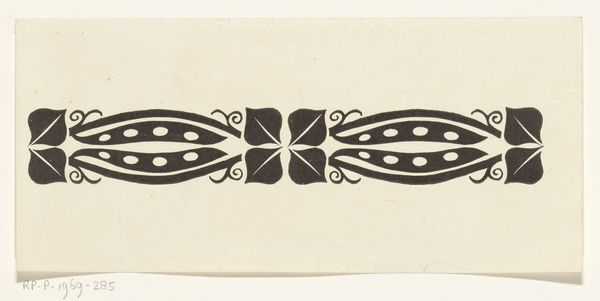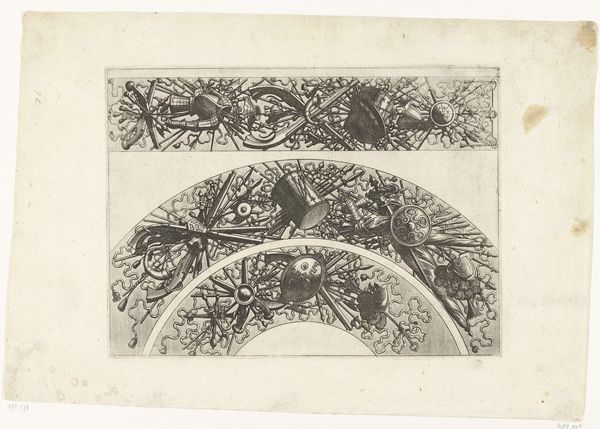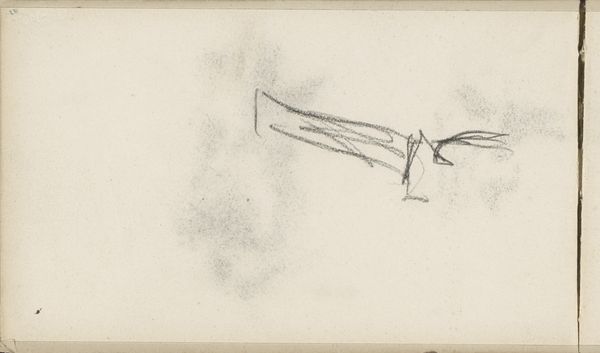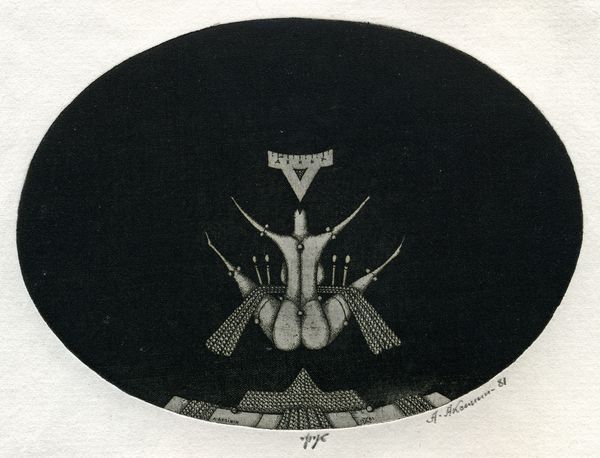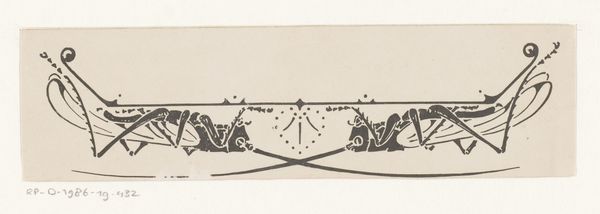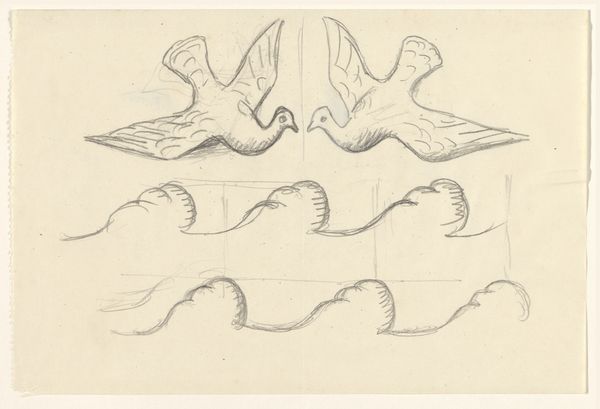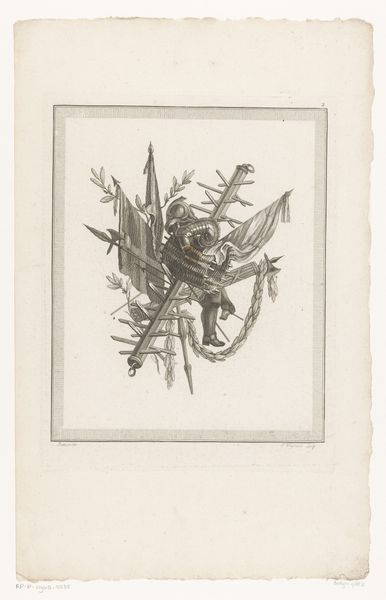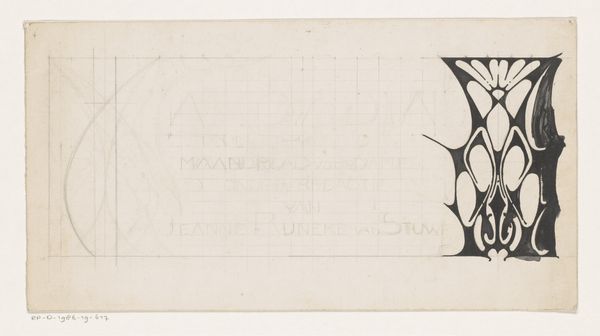
drawing, paper, ink
#
drawing
#
paper
#
form
#
ink
#
geometric
#
line
Dimensions: height 66 mm, width 198 mm
Copyright: Rijks Museum: Open Domain
Editor: This is “Vignet met distel,” or "Vignette with Thistle," by Reinier Willem Petrus de Vries, created sometime between 1884 and 1952 using ink on paper. It’s striking how stark and almost menacing this single thistle appears against the plain background. What visual echoes do you find resonating in this work? Curator: The thistle is such a fascinating choice, isn't it? Consider its cultural weight—often a symbol of resilience, pain, and even defiance. De Vries offers us the thistle not merely as a plant, but almost as a hieroglyph. It asks, what collective memories are awakened by these sharp, protective barbs? Editor: Hieroglyph, that’s interesting! I’m used to seeing thistles represented more… naturally, I guess. Why abstract it like this? Curator: Perhaps de Vries aims to distill the *idea* of the thistle, bypassing sentimentality. He’s isolating its core essence. The sharp, angular lines almost feel like weaponry, don’t they? Does it remind you of anything? A crown of thorns, maybe? Editor: I see that! The way the thorns are stylized definitely makes it seem less about nature and more about…something else. Suffering, maybe? Curator: Suffering, protection, boundaries. And, don’t forget, in some traditions, the thistle represents nobility of character precisely because it can withstand hardship. De Vries presents not just the image but the idea of enduring. It challenges us to look beyond the immediate and find symbolic resonance in a plant. What did you find surprising about the cultural significance and emotional range that such a stark image of the thistle carries? Editor: I definitely wasn’t expecting it to have such a deep history. It makes me appreciate the piece a lot more now. Thanks for sharing those insights.
Comments
No comments
Be the first to comment and join the conversation on the ultimate creative platform.
